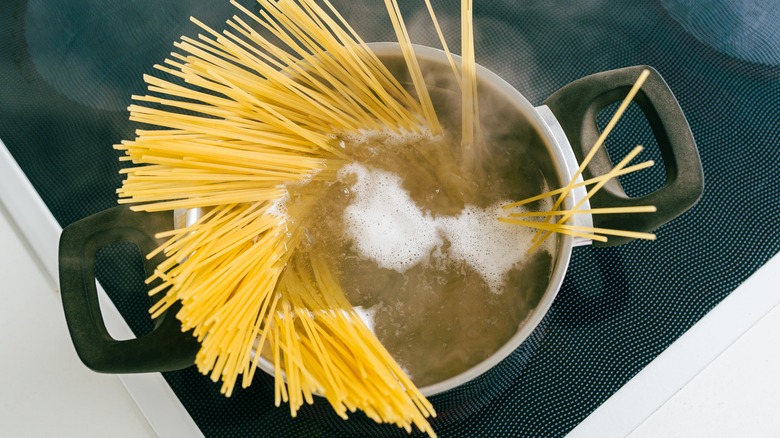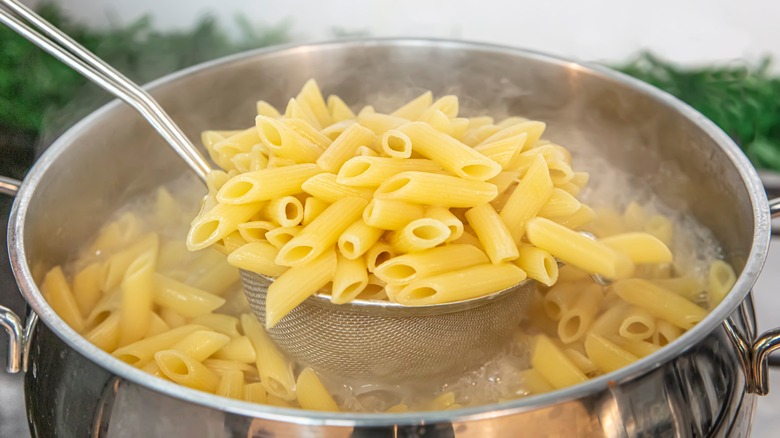The Size Of Your Saucepan Can Make Or Break Your Pasta Dish
Boiling pasta is one of the simplest things you can do in the kitchen. Even take-out-only types likely feel confident pouring a box of dried noodles into a pot of rolling water and setting a timer. But if you want to make the most out of your pasta water (and you should definitely be saving that pasta water), you should know that the pot you're using might be too big.
At some point, you've likely been advised to use upward of 1 gallon of water (or 4-6 quarts) for each pound of pasta you intend to cook. Conventional wisdom dictates that a large amount of water not only helps the pasta cook more evenly but also keeps it from becoming overly starchy and sticky; however, that's not actually the case. "I've learned that the big-pots-of-boiling-water paradigm is quite simply a myth," Food Network star Alton Brown writes on his website. To that point, chef and food scientist J. Kenji Lopez-Alt found that once pasta's starch is released into water, it has no effect on the pasta's texture (per Serious Eats). According to him, the only thing a large pot accomplishes is diluting the pasta water. Instead, try using a more manageable vessel, like a small saucepan.
Bigger isn't always better
When you boil pasta, the noodles release starches into the water. Incorporating that starchy water into your pan sauces is often the difference between a good plate of pasta and something truly restaurant-worthy. That's because the starches in the water thicken and emulsify the sauce, creating a supremely creamy final product that better sticks to the noodles. "Pasta water consists of starch granules and water — the exact same ingredients that go into a cornstarch slurry," chef J. Kenji Lopez-Alt writes for Serious Eats, adding, "You know — the kind you use to thicken your sauces?" Ergo, the more starchy the pasta water, the more effective it will be as a thickening agent.
You can easily achieve more concentrated pasta water with a smaller saucepan and less liquid. Rather than using 1 gallon per pound of pasta, try using just enough water to cover your noodles. Not only is this a foolproof technique for al dente pasta, but this way, the water will be teeming with thickening starch molecules. This will be evident in its appearance, as the starches turn the water cloudy and white. For pasta water with next-level starchiness, Alton Brown even recommends adding the pasta to cold water and letting it come to a boil. Either way, you should never drain your pasta water in the sink; instead, try removing the noodles with a spider strainer to preserve more of that precious, starchy liquid.

